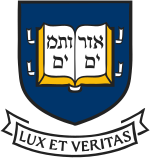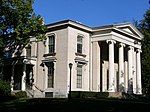Yale University is a private Ivy League research university in New Haven, Connecticut. Founded in 1701, Yale is the third-oldest institution of higher education in the United States and one of the nine colonial colleges chartered before the American Revolution.The Collegiate School (Yale's original name) was established in 1701 by Congregationalist clergy of the Connecticut Colony. Originally restricted to instructing ministers in theology and sacred languages, the school's curriculum expanded, incorporating humanities and sciences by the time of the American Revolution. In the 19th century, the college expanded into graduate and professional instruction, awarding the first PhD in the United States in 1861 and organizing as a university in 1887. Yale's faculty and student populations grew rapidly after 1890 due to the expansion of the physical campus and its scientific research programs.
Today, Yale is organized into fourteen constituent schools, including the original undergraduate college, the Yale Graduate School of Arts and Sciences and Yale Law School. While the university is governed by the Yale Corporation, each school's faculty oversees its curriculum and degree programs. In addition to a central campus in downtown New Haven, the university owns athletic facilities in western New Haven, a campus in West Haven, and forests and nature preserves throughout New England. As of 2021, the university's endowment was valued at $42.3 billion, the third largest of any educational institution. The Yale University Library, serving all constituent schools, holds more than 15 million volumes and is the third-largest academic library in the United States. Student athletes compete in intercollegiate sports as the Yale Bulldogs in the NCAA Division I Ivy League conference.
As of October 2020, 65 Nobel laureates, five Fields medalists, four Abel Prize laureates, and three Turing Award winners have been affiliated with Yale University. In addition, Yale has graduated many notable alumni, including five U.S. presidents, 10 Founding Fathers, 19 U.S. Supreme Court Justices, 31 living billionaires, 54 college founders and presidents, many heads of state, cabinet members and governors. Hundreds of members of Congress and many U.S. diplomats, 78 MacArthur Fellows, 263 Rhodes Scholars, 123 Marshall Scholars, 81 Gates Cambridge Scholars, 102 Guggenheim Fellows and nine Mitchell Scholars have been affiliated with the university. Yale's current faculty include 67 members of the National Academy of Sciences, 55 members of the National Academy of Medicine, 8 members of the National Academy of Engineering, and 187 members of the American Academy of Arts and Sciences.









